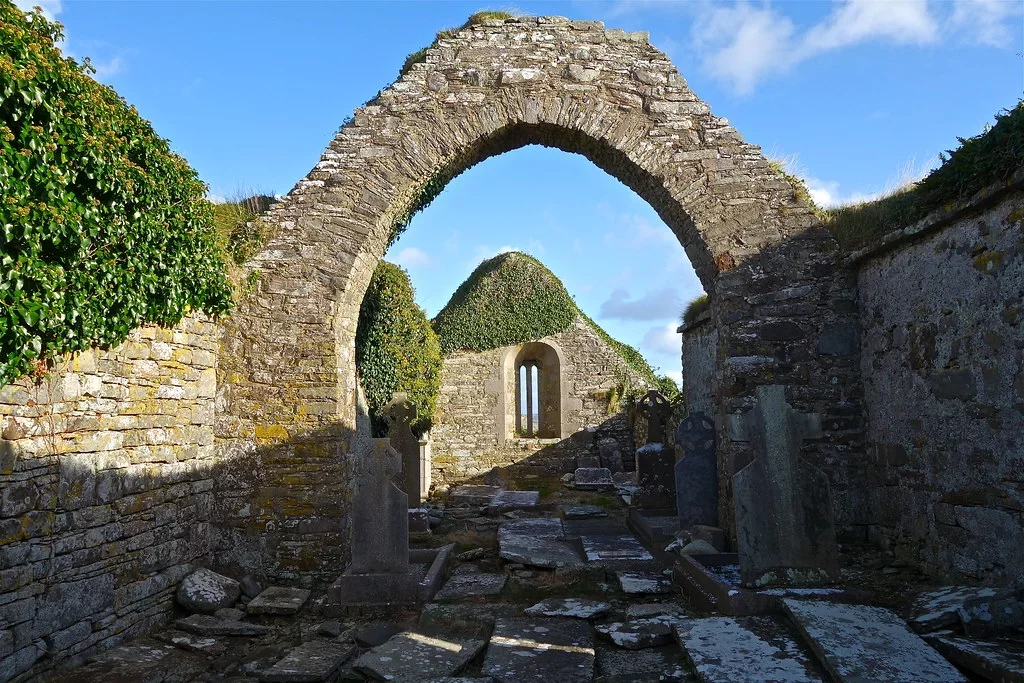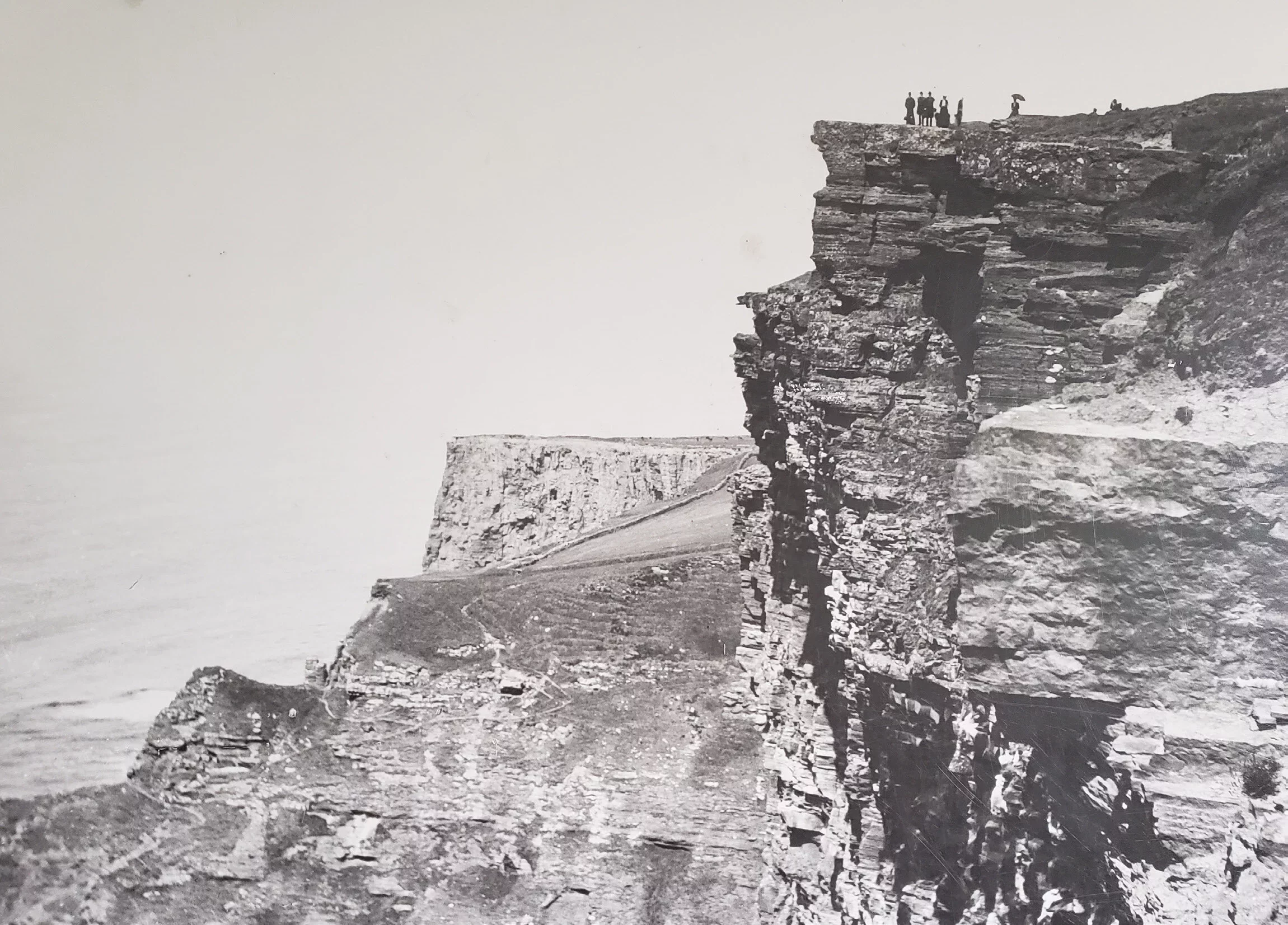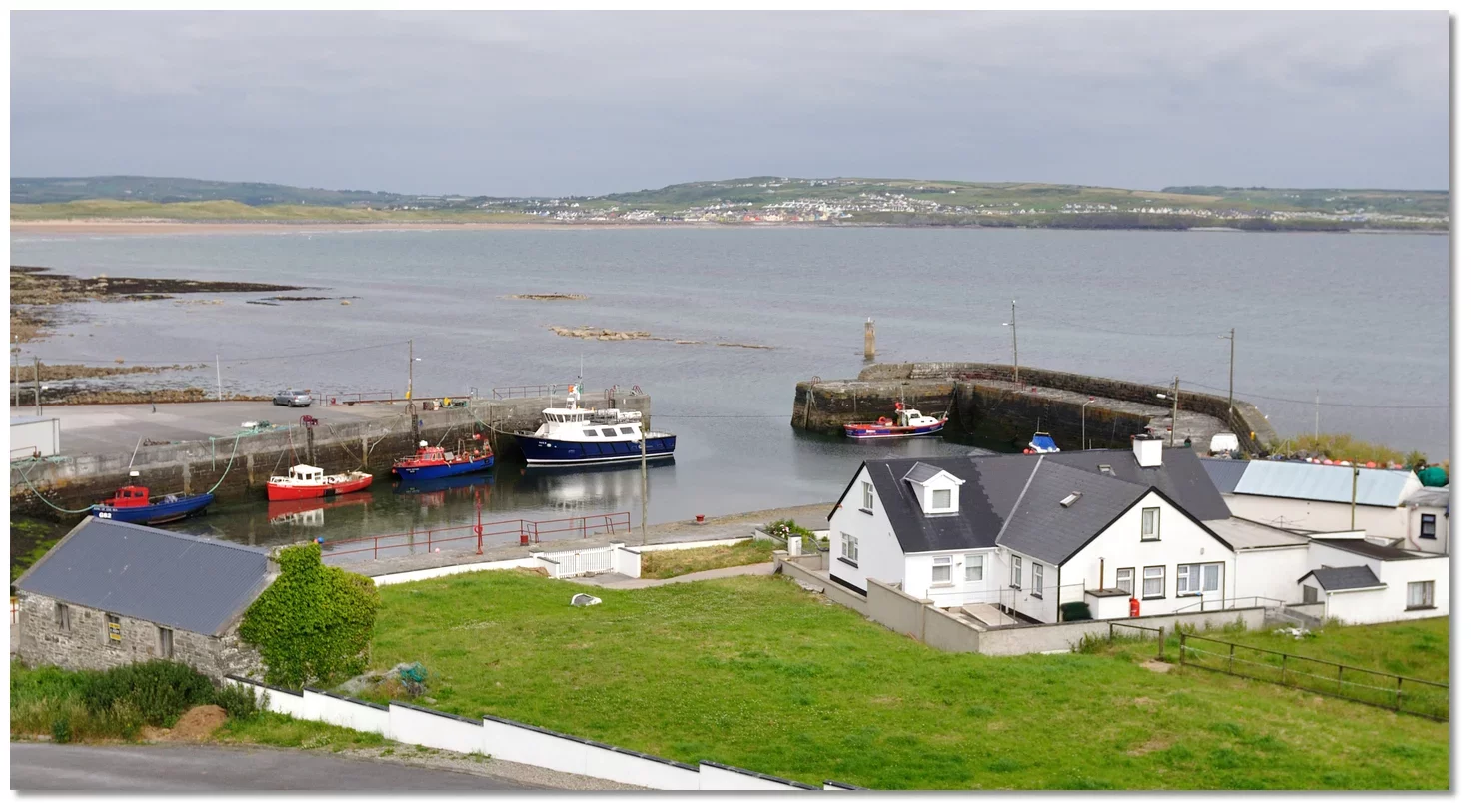Kilmacreehy Church & Graveyard -A Silent Witness Over the Bay

Two kilometers south-east of Liscannor Harbour, where the fields slope gently towards the sea, stand the weathered remains of Kilmacreehy Church. Surrounded by ancient gravestones and wildflowers, the ruin gazes out over Liscannor Bay. Though roofless and broken, it radiates an air of solemn dignity — a reminder that faith, memory, and community have long been bound to this place.
A church of medieval Clare
The surviving ruins date to the 14th century, built in the Gothic style with pointed arches and narrow windows. In its prime, Kilmacreehy would have been the parish church for the surrounding countryside, its bell calling villagers from farms and cottages scattered along the coast. Fishermen prayed here for safe seas, farmers for fertile fields, mothers for their children’s health. The graveyard beside it gathered generation after generation, each headstone a marker of both faith and family.
But Kilmacreehy’s story does not begin in the Middle Ages. The name itself — Cill Mhic Creiche, meaning “the church of MacCreiche” — points to a much older spiritual lineage, one rooted in the early Christian age of Clare.
Saint MacCreiche — the missionary of Clare
According to tradition, Kilmacreehy was founded in honour of Saint MacCreiche, one of the wandering holy men of 6th-century Ireland. Born in Connacht, MacCreiche is said to have travelled widely through Clare as a preacher, healer, and peacemaker. At a time when Christianity was still spreading across Ireland, saints like him became anchors of community — blending faith with folklore and weaving sacred sites into the landscape.
MacCreiche’s reputation was one of gentleness and miracle-working. In local stories, he blessed wells and springs to ensure water in times of drought, and he was often called upon to mediate between warring clans. His most famous tale, preserved in Clare folklore, tells of a monstrous serpent-like beast said to dwell in the Burren, terrorising the people. With prayer and fasting, MacCreiche confronted the creature, subdued it, and bound it, freeing the countryside from fear. To medieval storytellers, this was more than just a battle with a beast — it was a symbol of Christianity’s triumph over chaos, a saint bringing order to a wild land.
MacCreiche founded churches and monastic settlements across Clare, and Kilmacreehy may well have been one of them. Long before the Gothic church was raised here in stone, the site may have held a wooden oratory or small monastic enclosure, sanctified by his prayers. By the Middle Ages, devotion to MacCreiche was strong enough that the parish bore his name, and his feast day was remembered by locals who saw themselves as heirs to his mission.
The graveyard of memory
Today, the graveyard is perhaps the most evocative part of Kilmacreehy. Weathered Celtic crosses and unmarked slabs lean at angles, their inscriptions softened by salt winds and lichen. Some stones bear the iconography of 18th- and 19th-century folk art: angels, hourglasses, skulls — symbols of mortality etched in stone. Others simply record names of families still found in Clare today, threads of continuity across centuries.
Many of those buried here lived through Ireland’s most turbulent times. The Great Famine left its shadow across the parish, with families emigrating in desperation. Some sailed to America or Australia, never to return; others were laid here in the earth of their ancestors. Walking among the graves, you glimpse not only local history but the broader tides that shaped Ireland itself.
Folklore and echoes
Kilmacreehy is not without mystery. Locals sometimes speak of strange “soul lights” flickering among the graves on stormy nights — ghostly flames said to be the spirits of the departed. And because the ground was sacred long before the medieval church, some believe the site holds even older echoes, perhaps as a pre-Christian place of ritual that Saint MacCreiche himself reclaimed for the new faith.
Why it matters
Kilmacreehy is not grand or polished; its power lies in its rawness. Ivy clings to its arches, wildflowers sprout between the stones, seabirds wheel overhead, and the Atlantic wind whistles through empty windows. Yet this ruin holds a deeper weight: it is both a medieval parish church and an echo of Ireland’s earliest saints.
To visit Kilmacreehy is to walk into layers of time. You stand where medieval villagers gathered to hear mass, where early Christians honoured MacCreiche, where families buried their dead through famine and war, and where folklore still whispers in the night. It is a place where faith, legend, and memory converge — a ruin that is still, in its way, alive.
Related Folklore
Other Heritage sites

Liscannor Stone -Fossils, Flagstones, and a Village Built on Rock
In the 1800s, Cornelius O’Brien promoted its use in projects around the Cliffs of Moher, providing vital local employment. By the late 19th and early 20th centuries, stone from Liscannor was shipped abroad through the village harbour, valued for paving and buildings in cities far beyond Clare. Today, Liscannor Stone continues to be admired worldwide, linking the village’s past to its present and keeping its reputation alive as one of Ireland’s most famous building stones.

Liscannor Harbour & Pier - Stone, Sea, and Stories
Liscannor Harbour is the historic heart of the village, a pier built in the 1820s. The harbour’s greatest export was Liscannor flagstone, shipped from its pier to pave the grand streets of cities like London, Paris, and New York. Each slab of blue-grey stone, etched with the ripple-marks of an ancient sea, carried a piece of our village across the globe. To walk on these historic pavements is to walk on Liscannor's own story, a testament to the labour and geology of this small corner of County Clare.
Ready to Explore Liscannor?
Questions? Need directions or recommendations? We’re here to help you make the most of your time in Liscannor.